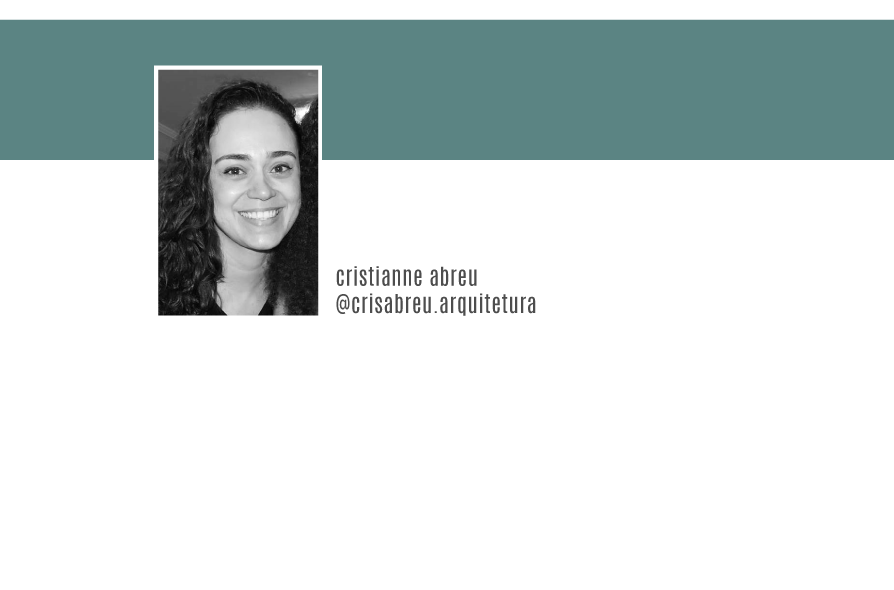15 May 2020 Universal Design in everyday professional life

by Cristianne Abreu
Architecture and Interior Design professionals find in their professional practice countless contents that need to be considered when preparing a project. Knowing current techniques and legislation is fundamental to this process. But that is not all. We design for people, and for that, we need to start understanding that human diversity is a rich and valuable thing. People are different, and this is normal. There is no standard. The culture of the ideal standard bothers me a lot, because it tries to equate what is not the same, it tries to ignore a difference that is powerful and that must be taken into account. This lack of awareness, education, and appreciation of human life and its differences results in inadequate “standard” projects for real users.
The professional who wants to stand out in this market needs to understand the differences in order to develop projects that best meet the physical and psychological needs of users. In my opinion, it is a human rights issue. It is no longer conceivable to plan spaces that discriminate against people.
This is a growing market, in view of the research, dissemination, and awareness of people. In addition, the aging of the world population, the increase in life expectancy and the search for quality of life make this issue more relevant and fundamental. Not having knowledge in the area can greatly influence the quality of the project, which will be used, experienced, and also evaluated by people.
Human diversity can be divided into 5 different perspectives, shown in infographic 01.
Infographic 01: Human diversity

Universal Design is a concept that brings people together, in the sense that they understand that our differences need to be respected and valued, as it “[…] proposes an architecture and design more centered on the human being and on their diversity. It establishes criteria for buildings, indoor, and urban environments and products to serve a greater number of users, regardless of their physical characteristics, their skills and their age, favoring human biodiversity and providing better ergonomics for all.” (NBR 9050, 2015)
To this end, seven Universal Design principles were defined, which are now adopted worldwide in accessibility planning and works, as shown in infographic 02.
Infographic 02: The Seven Principles of Universal Design

Source: CARDOSO (2013)
Taking this under account, we must consider that meeting the needs of all people is utopic. Our goal should be to serve the largest number of people in the best possible way, after all, we all benefit when the environment, product, and service have a universal design. This is essential to improve people’s quality of experience, use, mobility, and comfort.
There is still no law that requires Universal Design in Brazil, however, for some years now, this issue has been more widely discussed, mainly by institutions that represent people with disabilities (PCD) and by some professionals in the project area, however, this discussion needs to leave the academic world and laws, in order to be discussed by the population in general.
I invite architects and interior design to discuss this issue and develop projects with a little more empathy and compassion. By doing so, we are going to, with our knowledge, change the world, even if it is someone else’s world!!
Cheers, see you next time.
REFERENCES:
ASSOCIAÇÃO BRASILEIRA DE NORMAS TÉCNICAS (ABNT) NBR 9050: Acessibilidade a edificações, mobiliário, espaços e equipamentos urbanos. Rio de Janeiro, 2015.
CARDOSO, E. SILVA; T. L. K.; STRACK, V. L. . Uso de infográficos no ensino de acessibilidade em design e arquitetura. In 2 CIDAG – Conferência Internacional em Design e Artes Gráficas, 2013, Tomar. Livro de actas do 2 CIDAG. Lisboa: ISEC, 2012. P. 390-393.
World Health Organization. Relatório mundial sobre a deficiência. The World Bank; tradução Lexicus Serviços Linguísticos. – São Paulo: SEDPcD, 2012.
About Cristianne Abreu:
Cristianne Abreu – She has a master’s degree in Civil Engineering from UFES (2009) and a degree in Architecture and Urbanism from UFES (2003). Has operated in the market since 2003, with professional experience in residential, gastronomic, supermarkets and educational institutions, with an emphasis on Planning, Architecture and Interior Projects, Environmental Psychology, Environmental Perception and Post-Occupancy Assessment; and as a professor and speaker in undergraduate and graduate courses. She was a member of the teaching staff of the Catholic Faculty and the National of Vitória University Center. Graduate professor in architecture and interior design at the Graduate Institute – IPOG (since 2016).
Contact: [email protected] | @crisabreu.arquitetura




